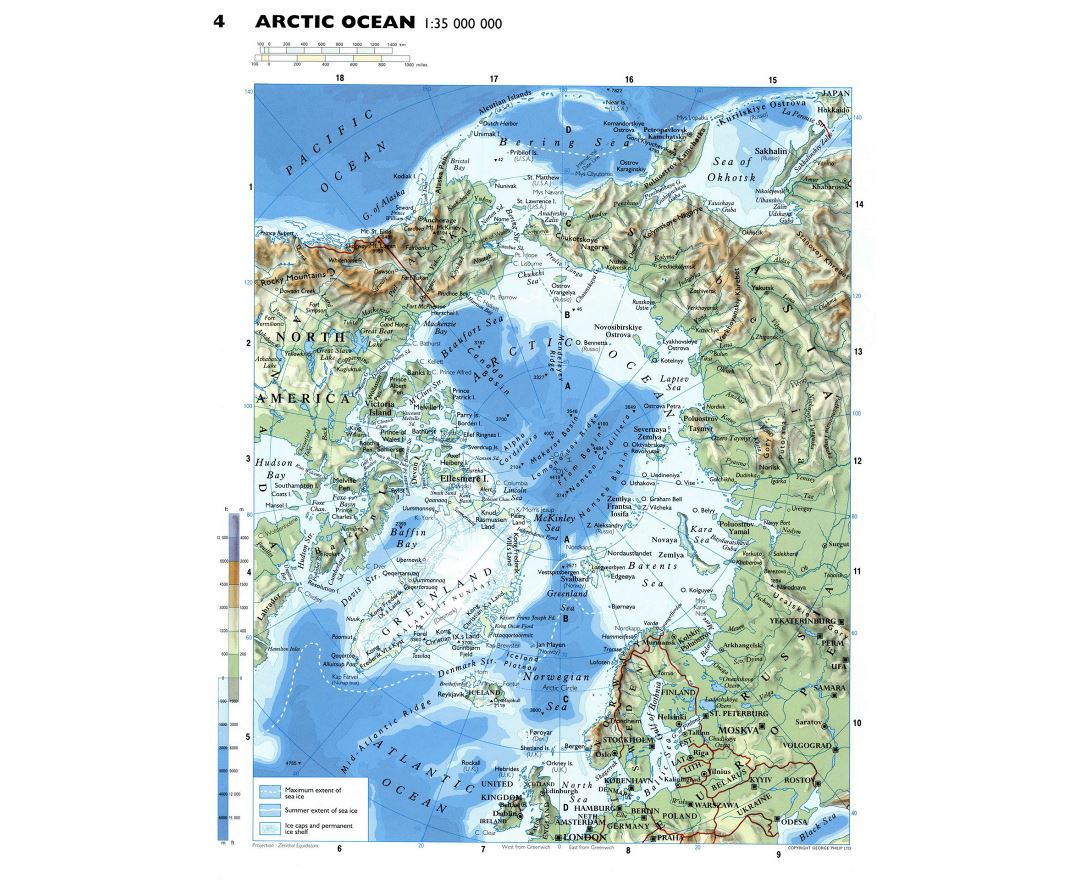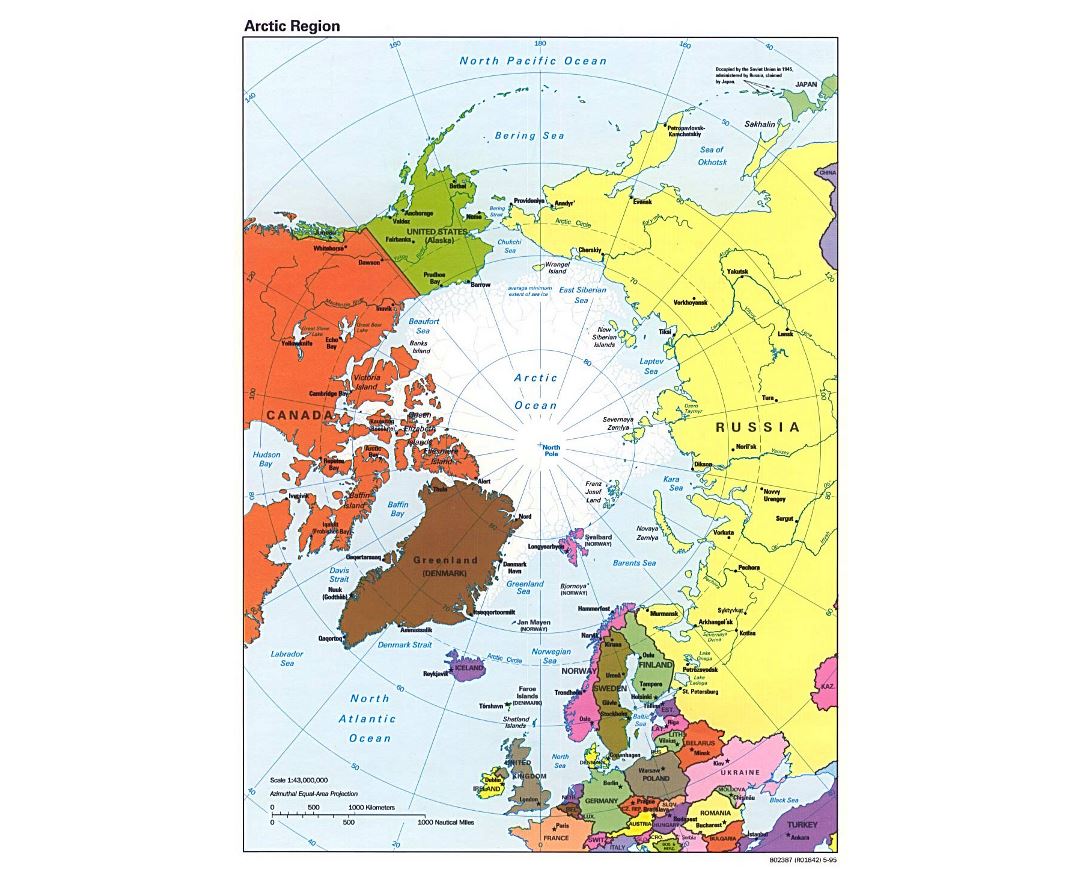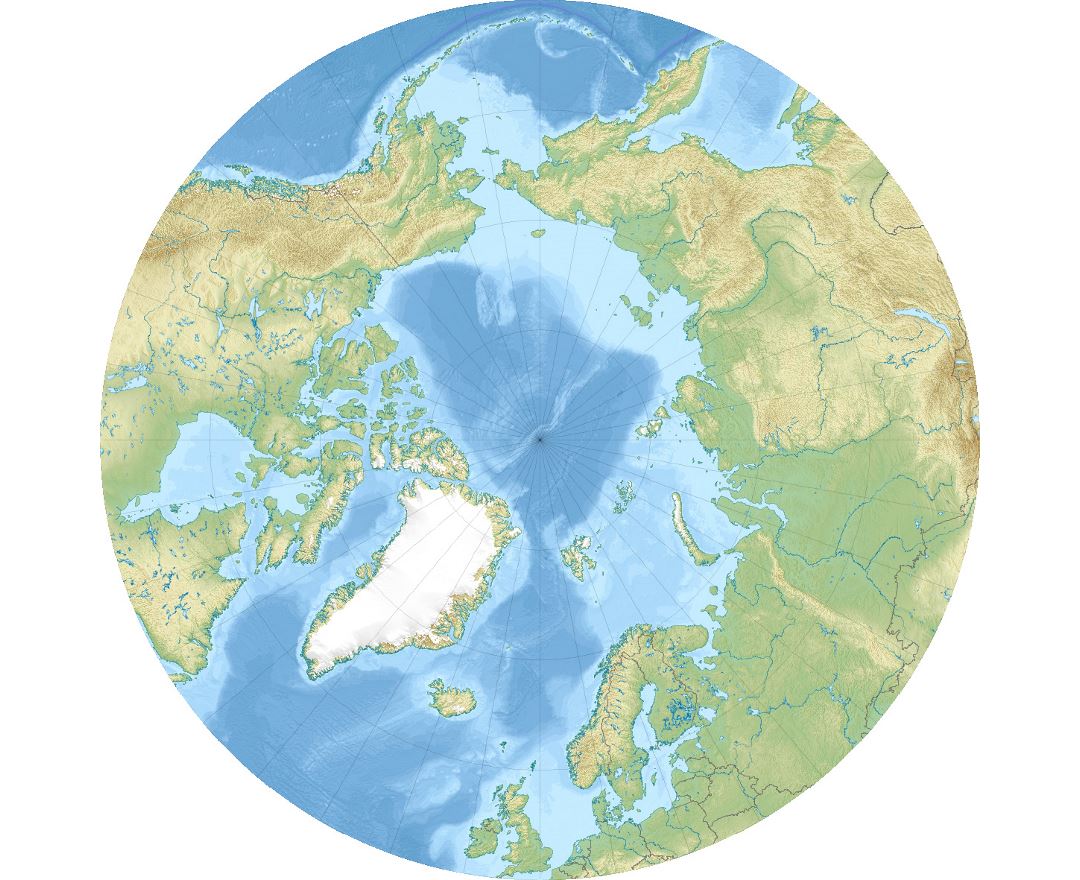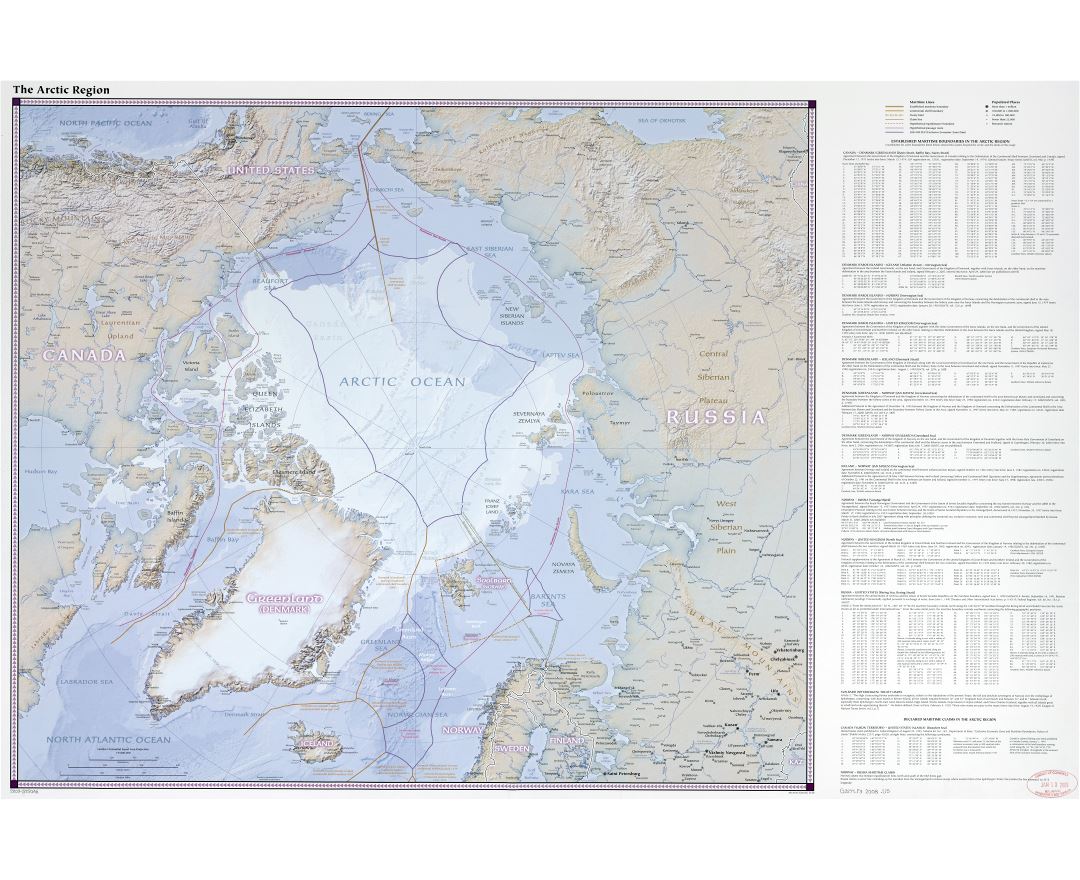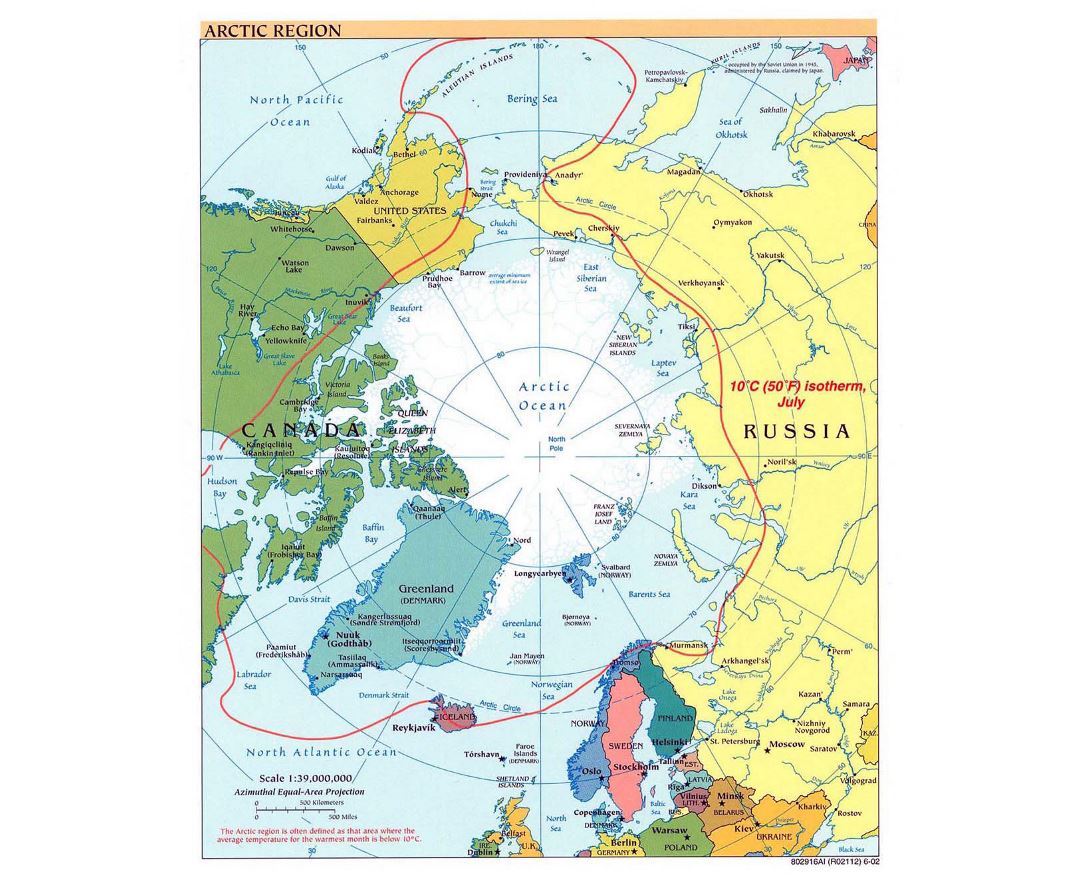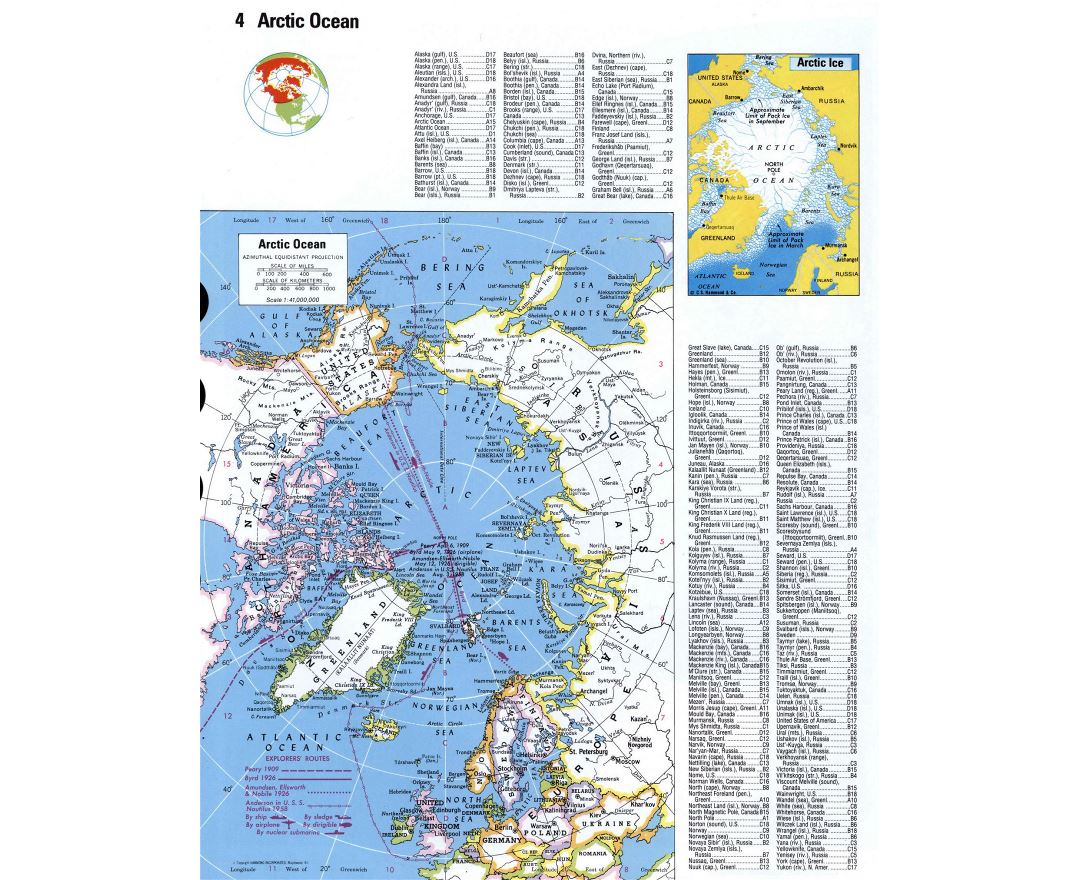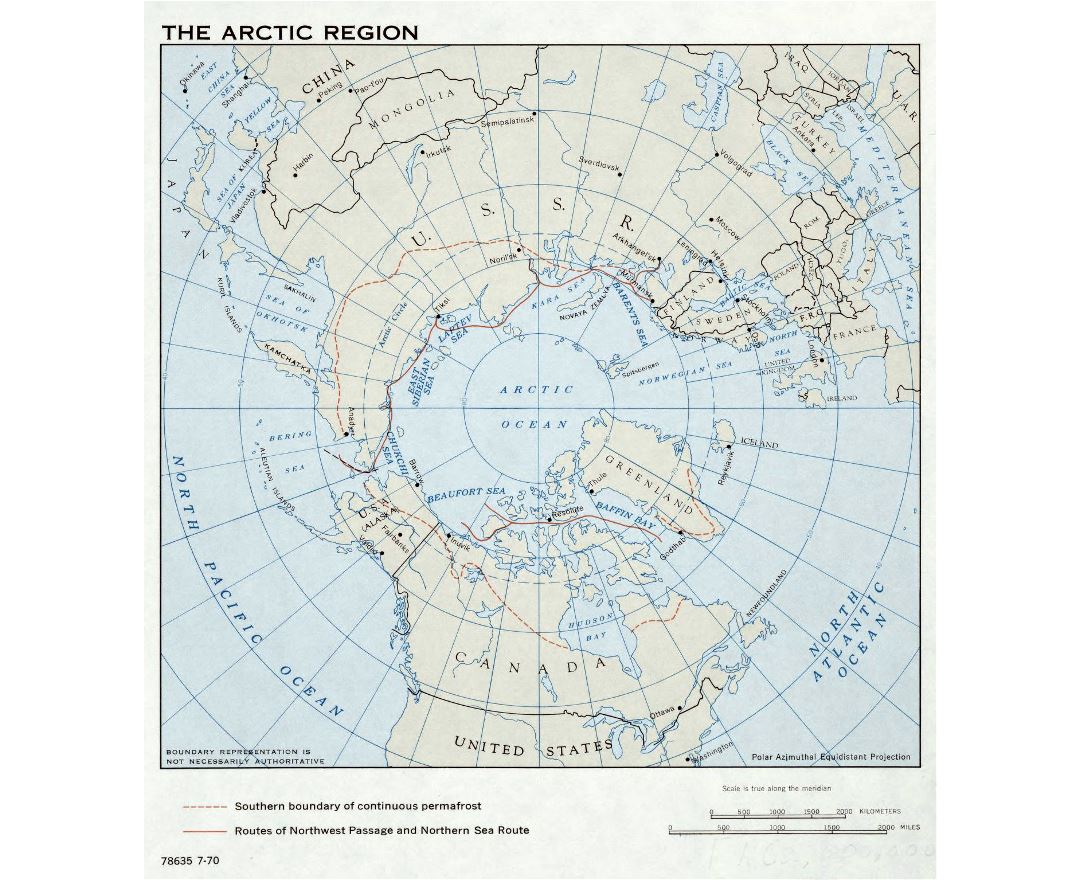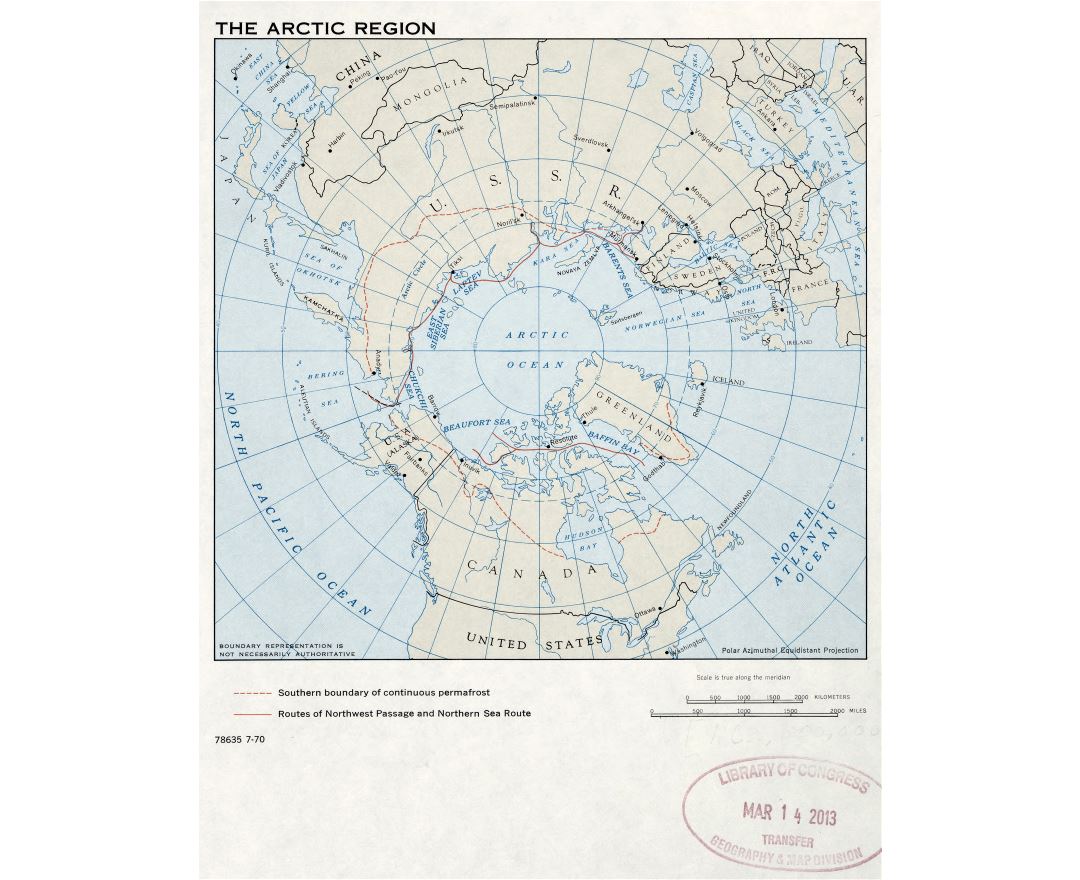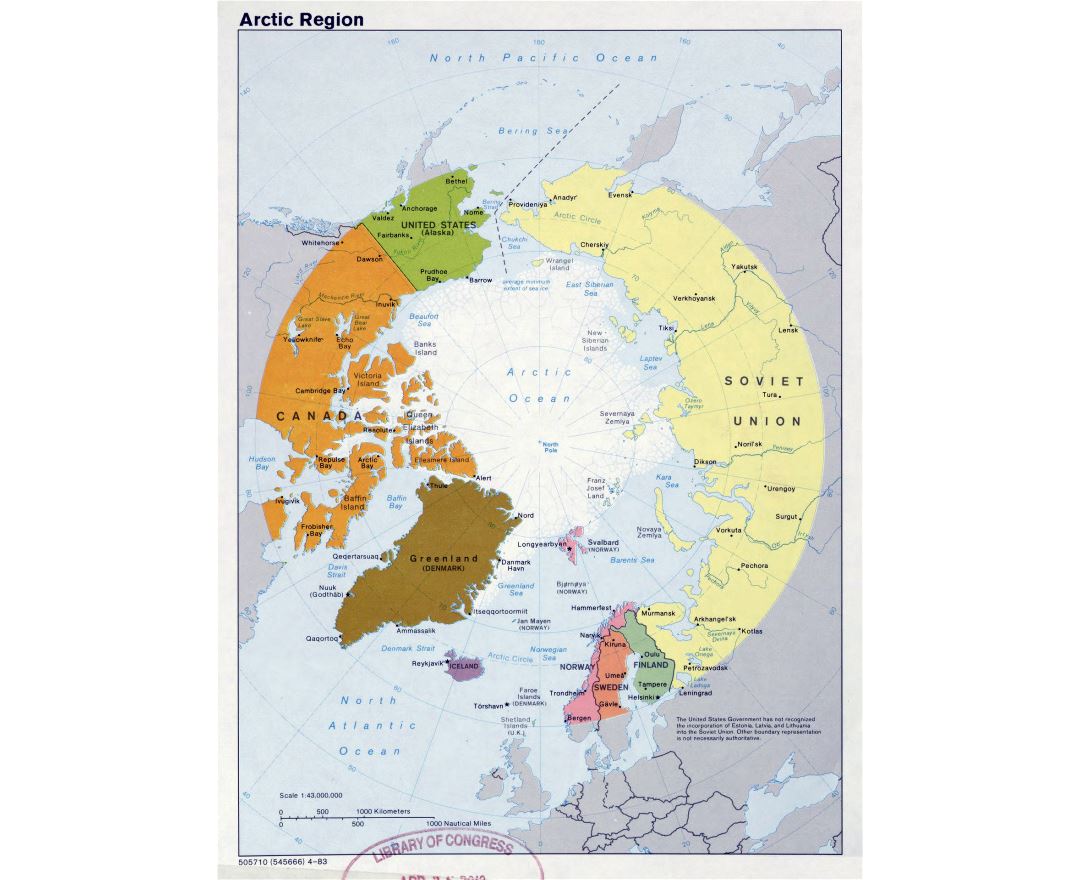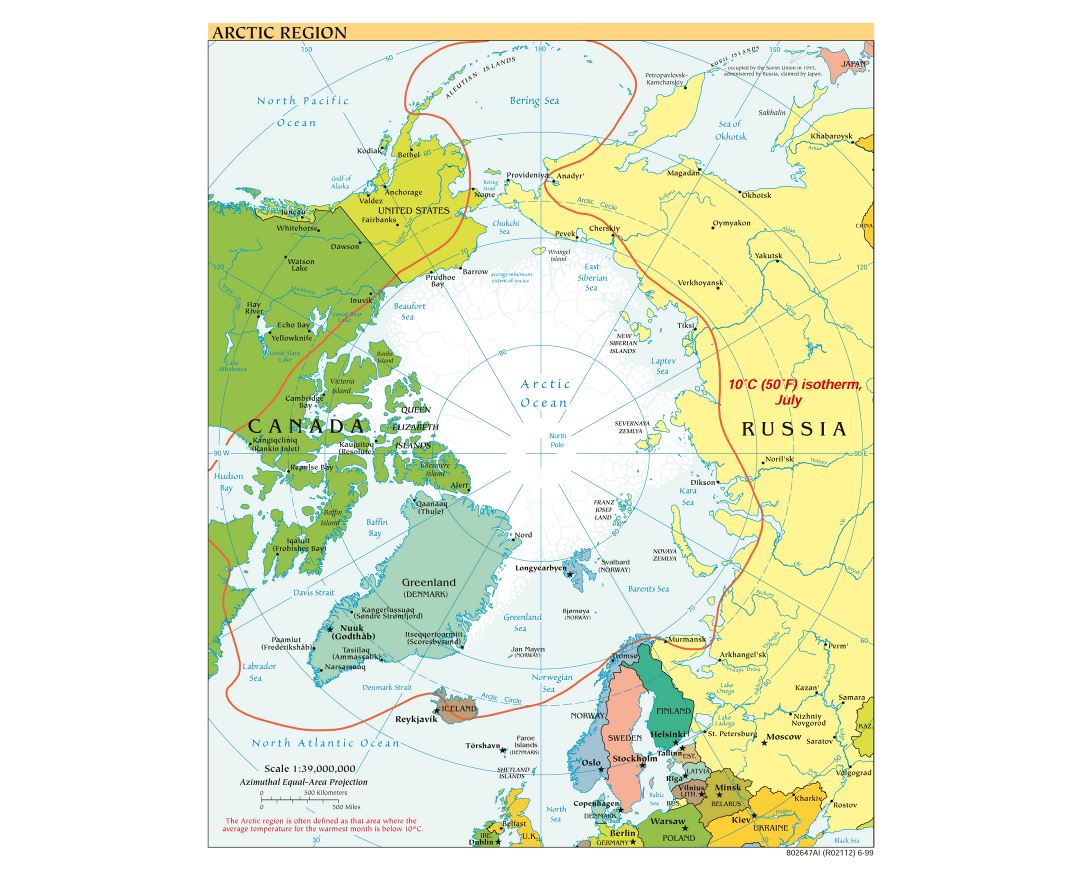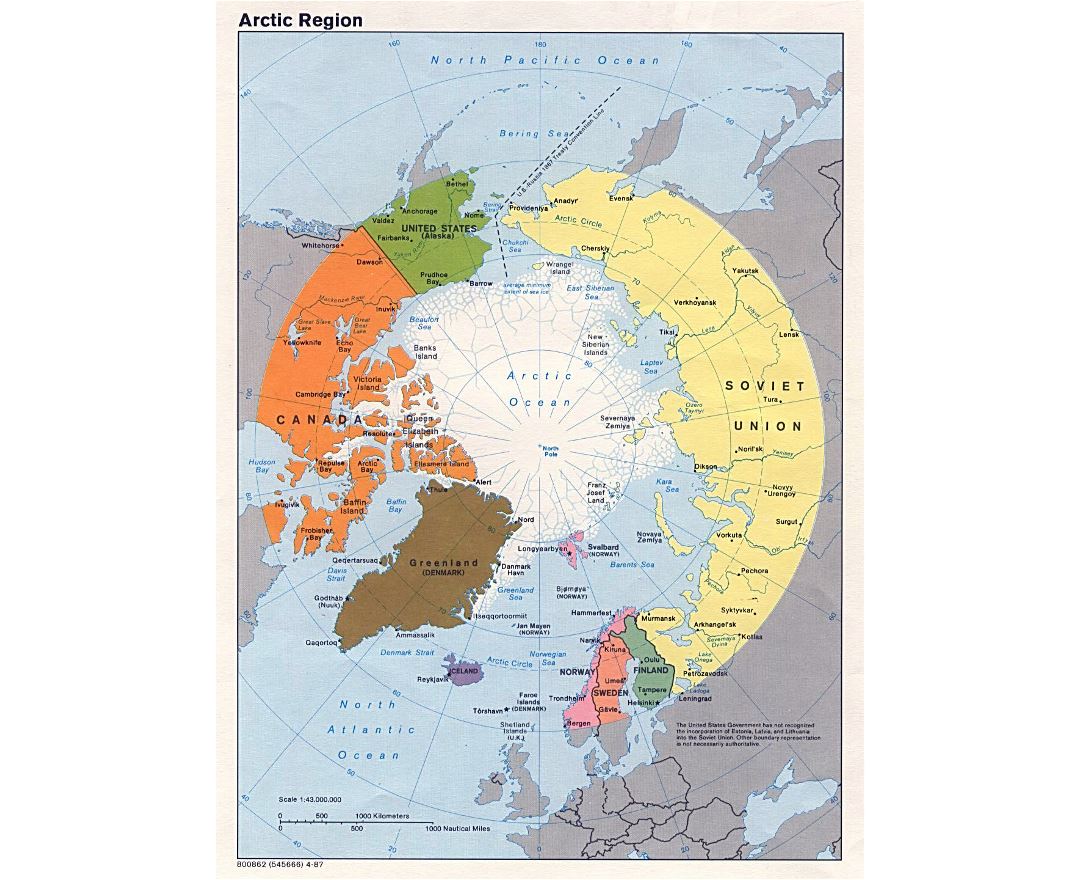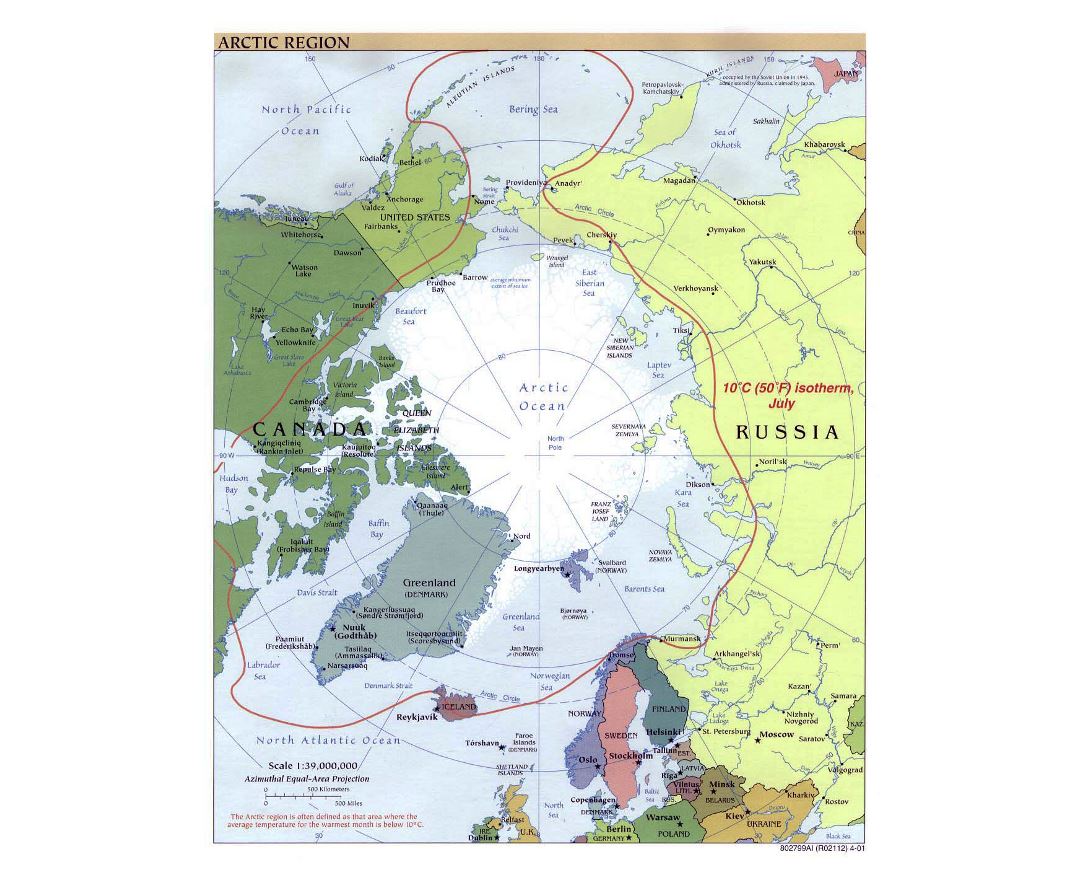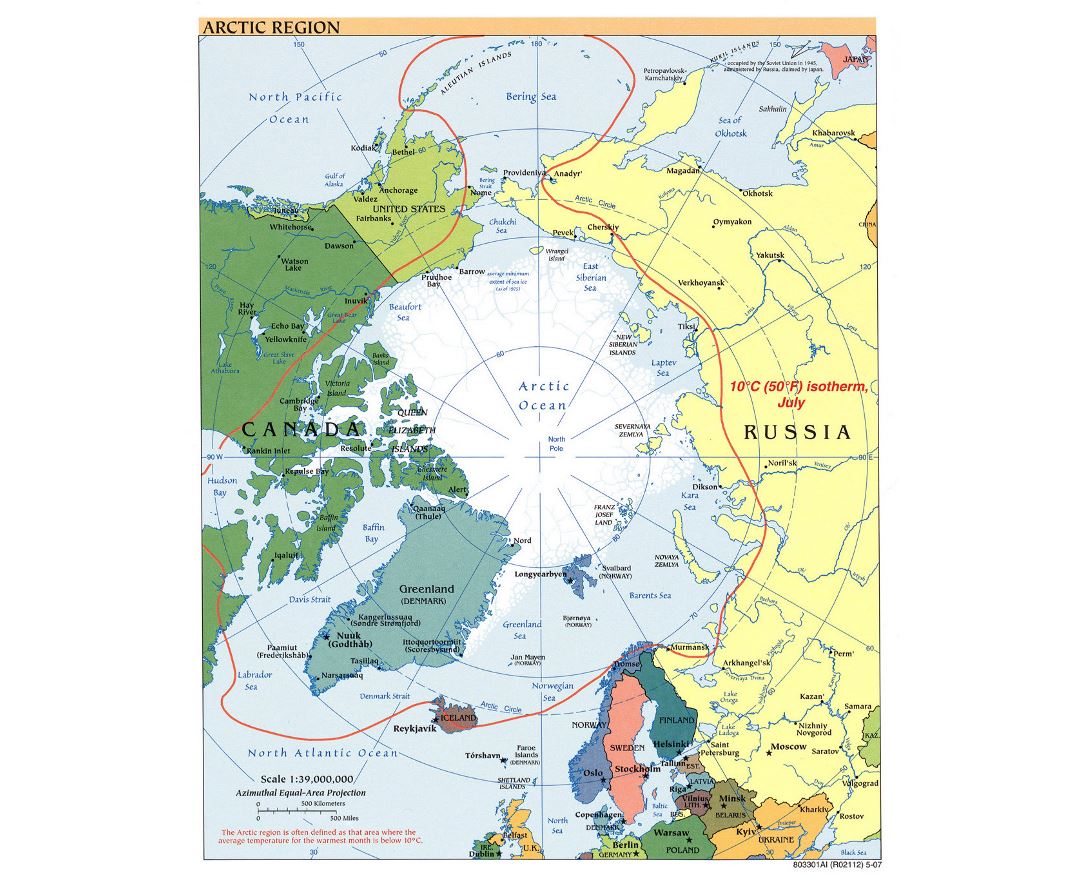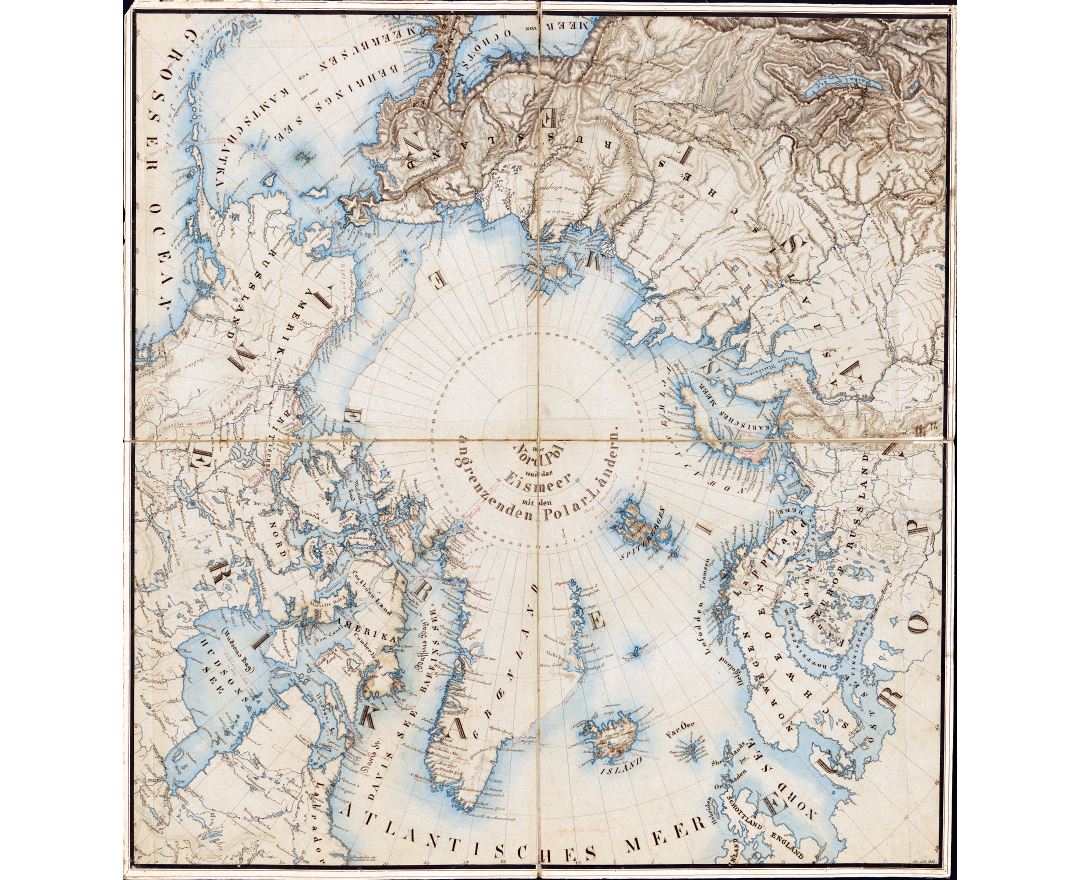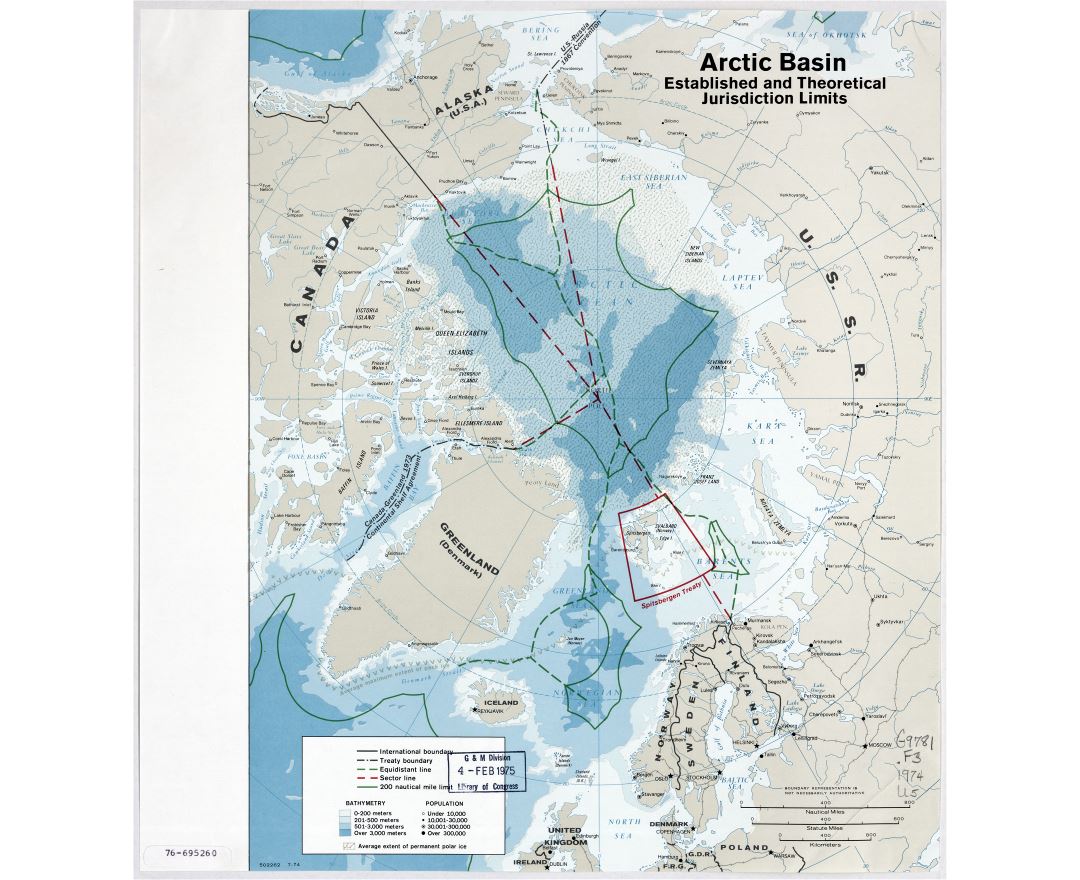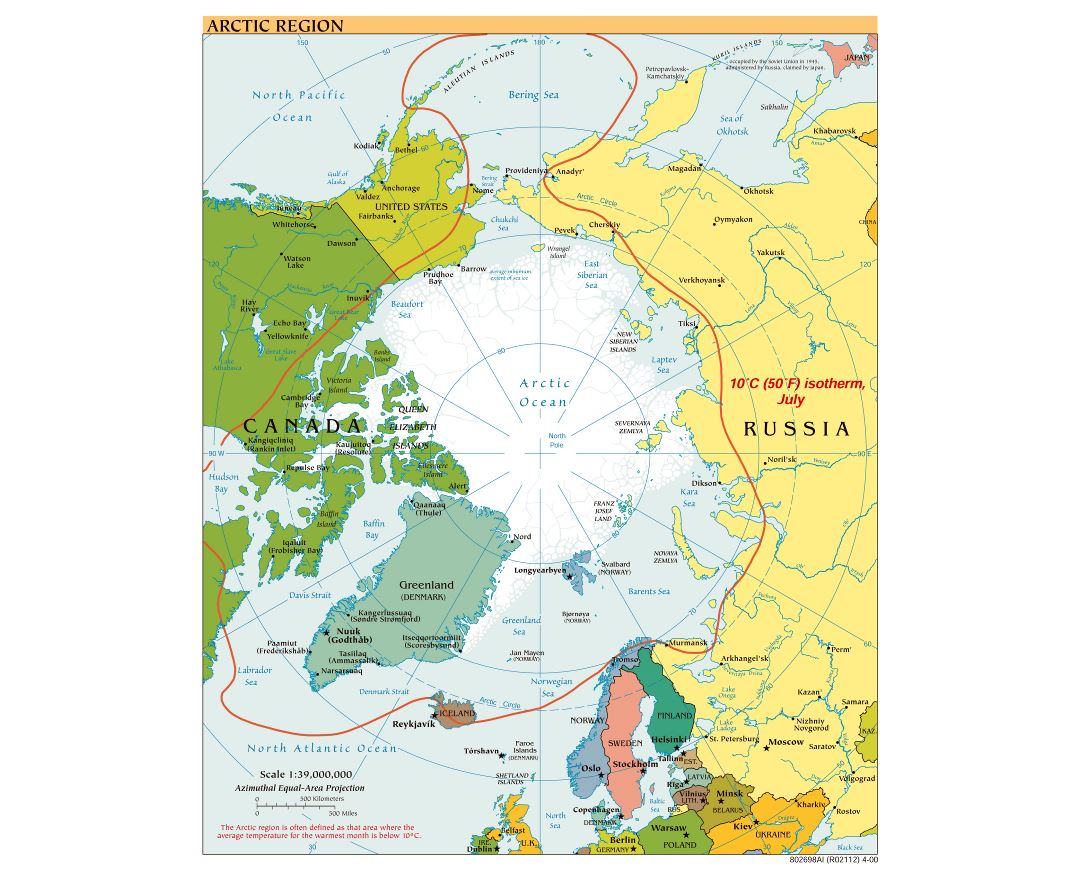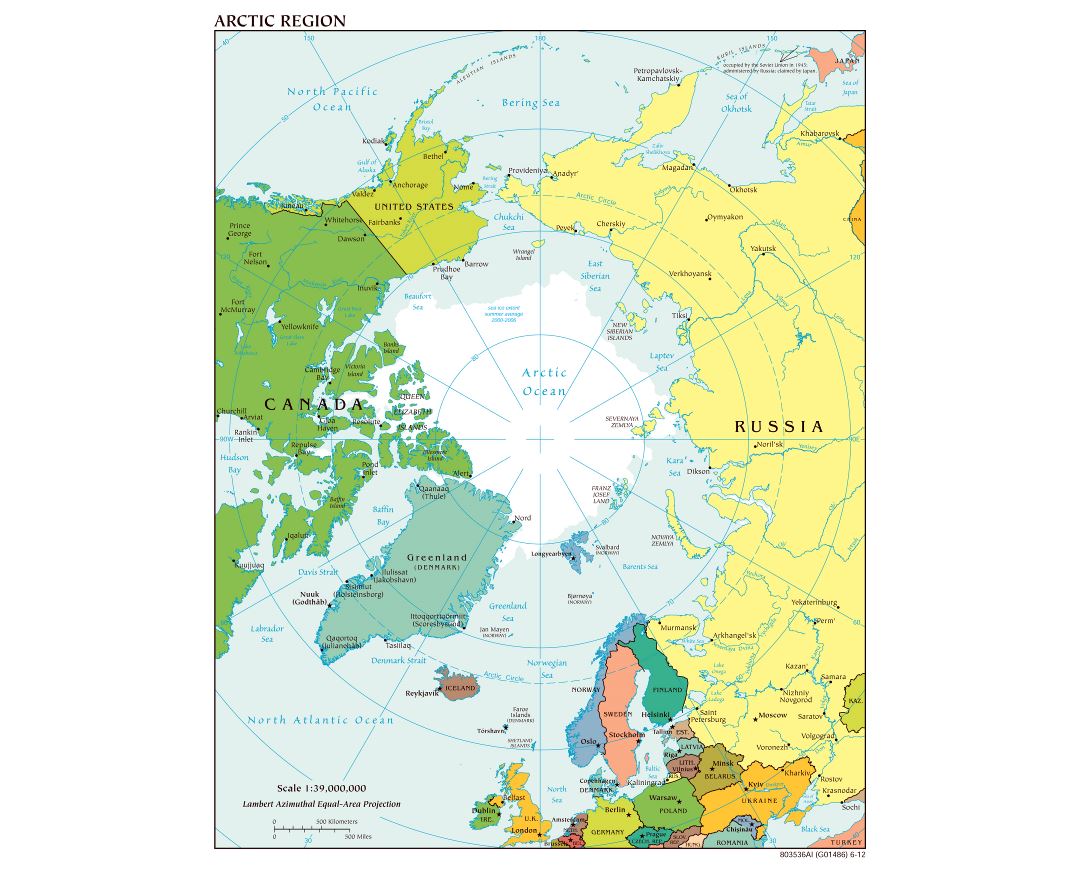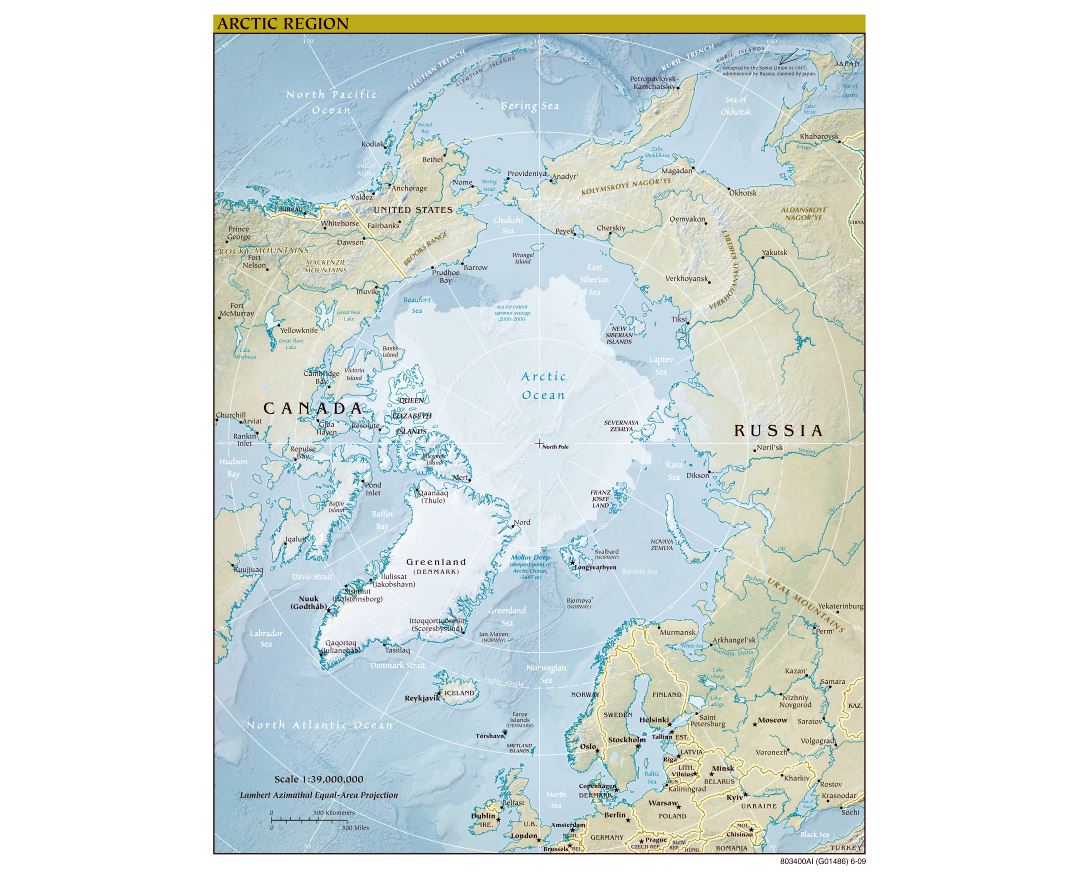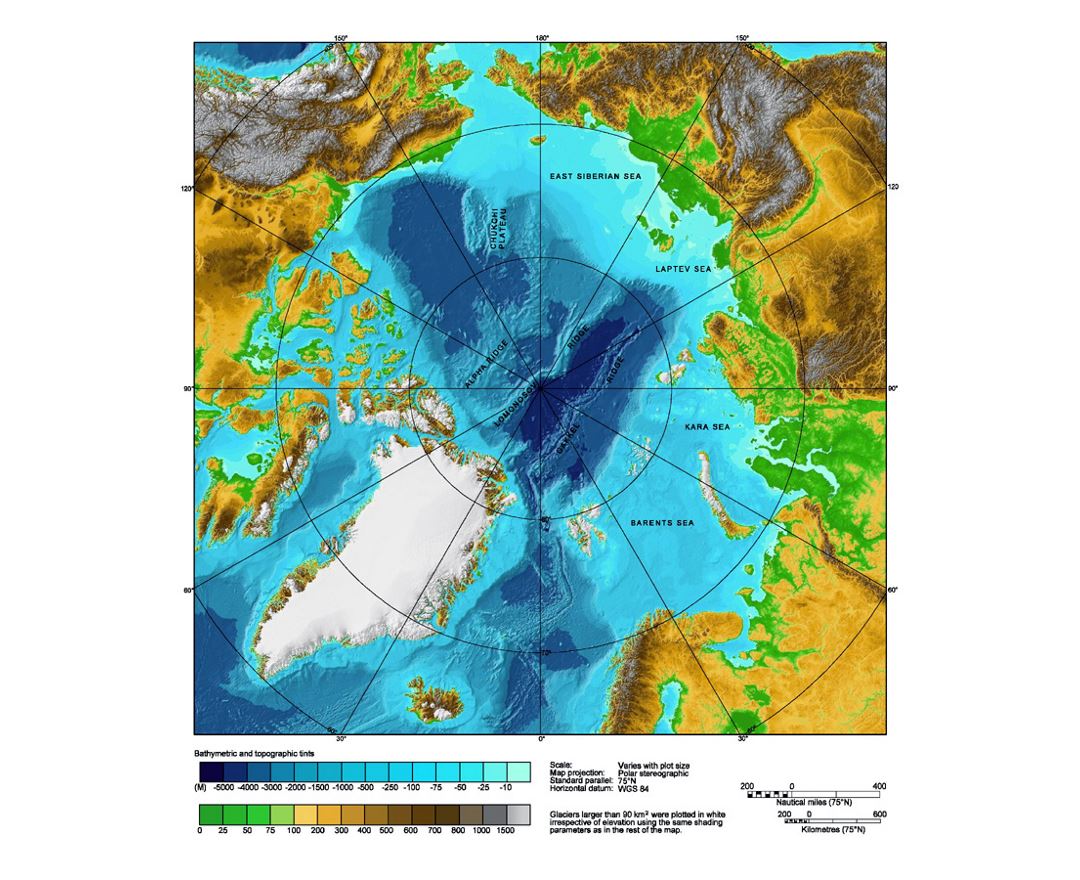Arctic Region
The Arctic is a polar region located at the northernmost part of the Earth. The Arctic consists of the Arctic Ocean and parts of Alaska (United States), Canada, Finland, Greenland (Denmark), Iceland, Norway, Russia, and Sweden. The Arctic region consists of an ocean and adjacent seas with a seasonally varying ice cover, surrounded by treeless permafrost. The area can be defined as north of the Arctic Circle (66° 33'N), the approximate limit of the midnight sun and the polar night. Alternatively, it can be defined as the region where the average temperature for the warmest month (July) is below 10 °C (50 °F); the northernmost tree line roughly follows the isotherm at the boundary of this region.
Socially and politically, the Arctic region includes the northern territories of the eight Arctic states, Canada, Denmark, Finland, Iceland, Norway, Russia, Sweden, and the United States, although by natural science definitions, much of this territory is considered subarctic. The Arctic region is a unique area among Earth's ecosystems. For example, the cultures in the region and the Arctic indigenous peoples have adapted to its cold and extreme conditions. In recent years, the extent of the sea ice has declined. Life in the Arctic includes organisms living in the ice, zooplankton and phytoplankton, fish and marine mammals, birds, land animals, plants and human societies.

